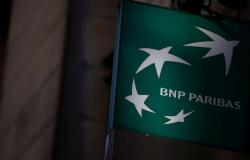
From October 16 to 20 (the first two days being reserved for VIP), the Art Basel Paris fair opens in the nave of the Grand Palais, completely renovated, one of the most important, bringing together nearly two hundred galleries from around forty countries. This variation of Art Basel in the French capital replaced the Fiac in 2022 . The fair (also located in Basel, Miami and Hong Kong) aims to highlight its support for the French artistic ecosystem by selecting around sixty galleries with spaces in France, or a third of its exhibitors. This figure, however, covers very diverse realities, from medium-sized galleries located exclusively in Paris, to branches of multinationals. Among the latter, Hauser & Wirth ensures that its programming “highlights many of the gallery’s artists who have deep ties to Paris. From those who were born there like Louise Bourgeois and Hélène Delprat to artists from far away like Barbara Chase-Riboud and Takesada Matsutani, including those who sought a place of experimentation like Alexander Calder, George Condo, Ed Clark and Cathy Josefowitz . » A very broad meaning of the “French scene” which certainly underlines all its richness. But, as a Parisian gallery owner soberly observes:
“The reality is that it is more and more difficult to show a French artist at a fair outside France. »
French artists in decline With the exception of a handful of them present in major international biennials – such as Kader Attia or Pierre Huyghe – French artists are in fact almost unknown abroad. This lack of notoriety results in prices lower than those of their foreign counterparts, particularly American and German, which gives gallery owners even less incentive to present their works at fairs. Thus the furniture sculpture by Julien Berthier (born in 1975), an artist present in the collections of the Center Pompidou, which took pride of place at the end of August on the stand of the Georges Philippe and Nathalie Vallois gallery (Paris) at the Art-o-rama show , in Marseille. Given its price, less than 50,000 euros, there is very little chance that the gallery will show it, for example at Art Basel, in Basel, the fair where collectors from all over the world flock. “In 2014, the 100 most profitable contemporary artists sold at auction alone accounted for two thirds of the global sales result, points out art sociologist Nathalie Moureau. This movement does not affect the French scene: in 2012, the total sales of the 10 most successful French artists at auction were barely equivalent to a tenth of the turnover achieved by the ten best German artists.(1). This observation remains valid. It thus took a certain audacity for the Balice Hertling gallery (Paris) to present at “Art Unlimited” – the sector of Art Basel, in Basel, reserved for extraordinary works – the chromatic vibrations of Julie Beaufils (born in 1987) : patient work upstream allowed the acquisition of this set (Inner Sources
) by a Hong Kong collection. In the same way, when Christophe Gaillard (Paris, Brussels), two years ago, prepared the transfer of one of his flagship artists, Hélène Delprat (born in 1957), to the Hauser & Wirth gallery, he did so knowingly. The gallery owner knows that the painter’s work will benefit from greater visibility and increased credibility, once integrated into this Swiss mega-gallery. Backed by this powerful partner which has a dozen subsidiaries (in Zurich, Gstaad, Saint-Moritz, London, Somerset, Los Angeles, New York, Hong Kong, Monaco, Menorca, etc.), Hélène Delprat can carry out ambitious projects. , particularly with foreign museums, while, mechanically, the prices of his paintings, of which his original gallery keeps a large stock, skyrocket.
The commitment of collectors
Before achieving success, the most forward-looking Parisian galleries, like that of Yvon Lambert or Daniel Templon, went through lean years. In the 1960s and 1970s, their most radical exhibitions ended in commercial failures. Christian Boltanski (1944-2021) sold nothing when he exhibited at Ileana Sonnabend. And it is thanks to Belgian collectors that the Durand-Dessert gallery, active from 1975 to 2004, has survived. French collectors were not crowding in front of the doors. All these gallery owners did not feel missioned to defend the French scene either: their curiosity was exercised at 360°. This is demonstrated, for example, by the donation by Liliane and Michel Durand-Dessert of more than 180 works which, in 2021, added to the funds of the Museum of Modern and Contemporary Art in Saint-Étienne (MAMC+ ). The commitment of the couple of gallery owners and collectors to contemporary creation demonstrated their European vision. “They gave strong and early support to the German scenes (Joseph Beuys, Gerhard Richter, Ulrich Rückriem…), English (John Hilliard, Barry Flanagan, David Tremlett…) and Italian (Alighiero Boetti, Jannis Kounellis, Mario Merz…), without neglecting the French context
(Bertrand Lavier, Djamel Tatah, Gérard Garouste, etc.),” explains a manager of the Saint-Etienne museum. In the same way, the Pinault Collection regularly shows some artists from the French scene – notably Bertrand Lavier, Dominique Gonzalez-Foerster, Pierre Huyghe, Philippe Parreno, Martial Raysse… – without however refraining from devoting personal exhibitions to artists foreigners like Damien Hirst, Marlene Dumas, Albert Oehlen, Rudolf Stingel or currently Julie Mehretu (at Palazzo Grassi until January 6, 2025). The collector and patron Laurent Dumas, for his part, adopted a more militant stance. The Emerige Endowment Fund, which he created, encourages young artists on the French scene via the Emerige Révélations Scholarship. And this fall, it is under the title “Parade, a French scene” that the Mo.Co in Montpellier is exhibiting a selection of works by around forty artists from its collection, from Jean-Michel Alberola to Rayan Yasmineh via Benoît Maire, Nina Childress, Edgar Sarin, Djamel Tatah, Agnès Thurnauer… This claimed defense of the French scene is a recent phenomenon. But it is not isolated: an initiative like “The Day of the Painters”, orchestrated on September 19 by Thomas Lévy-Lasne with the Musée d’Orsay, also goes in this direction, even if it declines a more corporatist bias . As for a major event like the Lyon Biennale, its 17th edition this year calls on nearly 80 artists from multiple backgrounds, many of whom live in France. The difficulty for this type of event is to fit into an international context, without overshadowing the French scene.
The role of museums France, through its cultural policy, has a long tradition of support for the arts. Highly regarded abroad, museums like the Center Pompidou and the Museum of Modern Art in Paris are supposed to reflect the French scene in its historical and contemporary dimensions. Gold “The most common criticism made to those responsible for museums like the Center Pompidou is that the programming leaves too little room for mid-career artists on the French scene. notes gallery owner Nathalie Obadia (Paris, Brussels), who teaches at Sciences Po (2). According to his analysis, the programming of institutions is increasingly dependent on economic issues (under the combined effect of the drop in subsidies and the increase in the cost of exhibitions), which pushes museums to make less risky choices. . Not to mention that the competition is tough. The ambitious exhibition dedicated by the Center Pompidou to David Hockney (2017) attracted 620,000 visitors. A relative record compared to the 1.25 million entries recorded by the Louis Vuitton Foundation for the Morozov Collection in 2021. In the region, the Regional Contemporary Art Funds play a significant role in supporting the French scene thanks to their purchases : “During the decade 2010-2020, for a small core of galleries (Air de Paris, Art: Concept, gb agency – which closed in early 2024 –, Jocelyn Wolff, Laurent Godin, Marcelle Alix, Michel Rein),the number of works acquired has exceeded twenty, even thirty”
notes Nathalie Moureau. As for the National Center for Plastic Arts, operator of the Ministry of Culture, its range of actions, between acquisitions, orders and project support, constitutes appreciable support for French galleries and artists: in 2018, its budget which was ‘approximately 10 million euros increased to nearly 15 million euros in 2019, then to 19 million euros in 2021. Among the numerous aid measures, we can also mention the in-depth work carried out over the past twenty- five years by the Pernod Ricard Foundation, through its prize, which rewards artists on the French scene. Or that of the Association for the International Diffusion of French Art (Adiaf), with the Marcel-Duchamp Prize, endowed with 90,000 euros, including a check for 35,000 euros for the winner. Or, more discreetly, the project aid system set up in 2011 by the Artists’ Foundation, to which it devotes nearly 500,000 euros each year.
Paradigm shift If the influence of the French scene is a complex equation, it must be considered in an environment which is also increasingly so.“A few years ago, the art world had New York and a few European capitals as its main centers. The three international meetings were Basel, Venice and Kassel, and everything was decided there”
observes Mathieu Mercier, 2003 winner of the Marcel-Duchamp prize. But this Western domination has given way to a much more globalized and diverse landscape. Art scenes in formerly peripheral regions, such as Asia, Africa, Latin America, and the Middle East, have gained visibility and influence. Cities like Beijing, Shanghai, Lagos, São Paulo and Dubai have become dynamic centers for contemporary art. International art fairs – such as Art Basel Hong Kong – or biennials like that of Sharjah or Dakar have also helped to highlight these new scenes.
ERRATUM – Tuesday October 15, 2024 Contrary to what was published in
The Eyen°779, the decision of the RMN-GP, not to renew the Fiac for the benefit of the organizer of Art Basel, was taken on January 26, 2022 and not in 2021.
France





